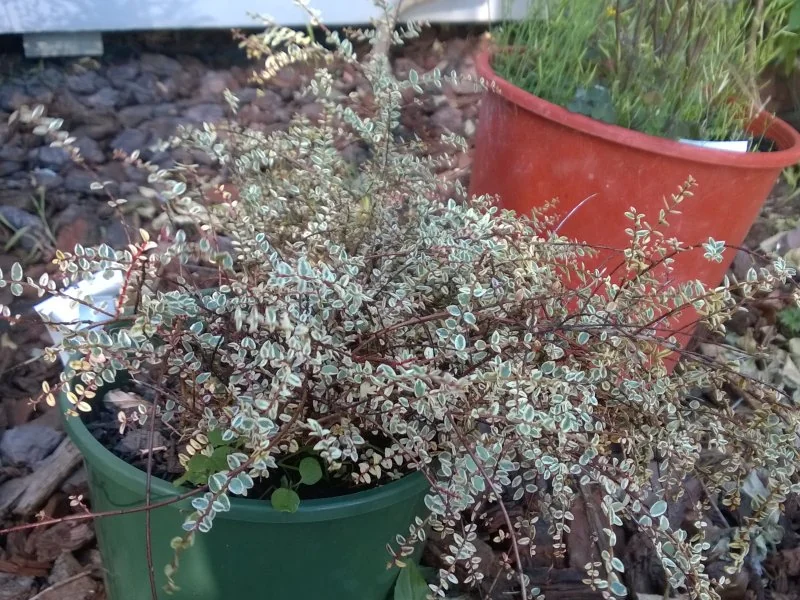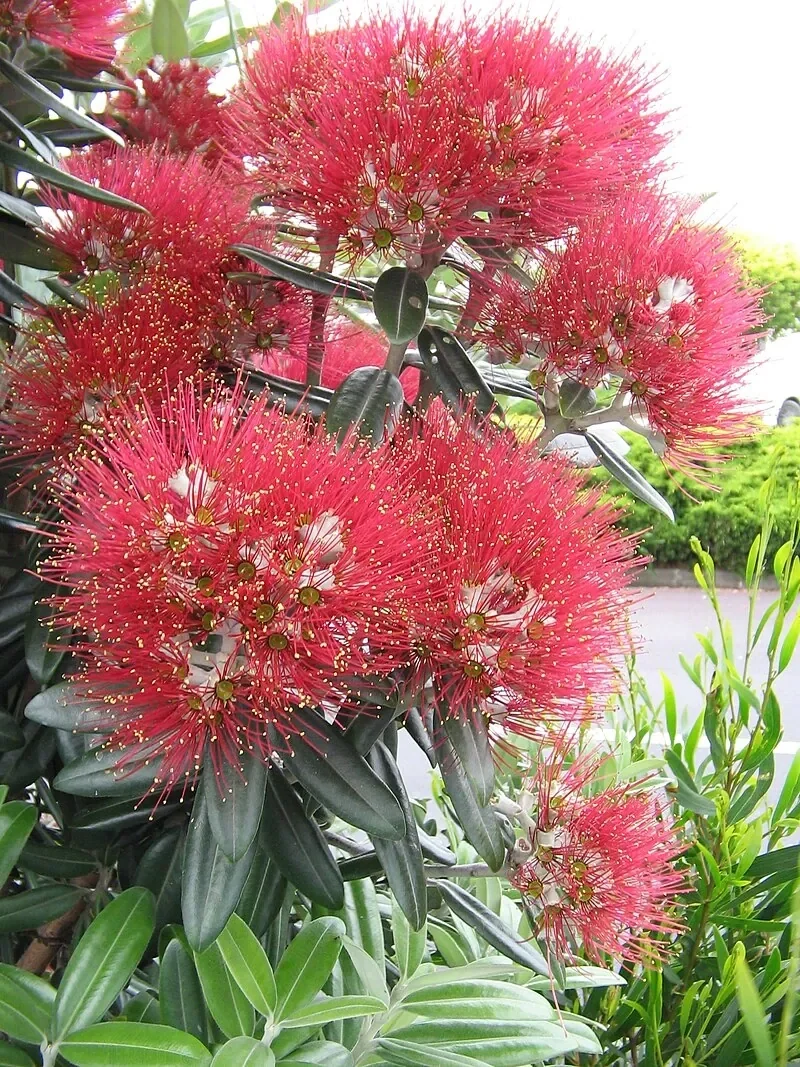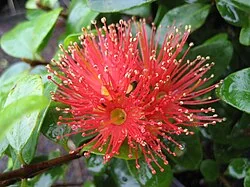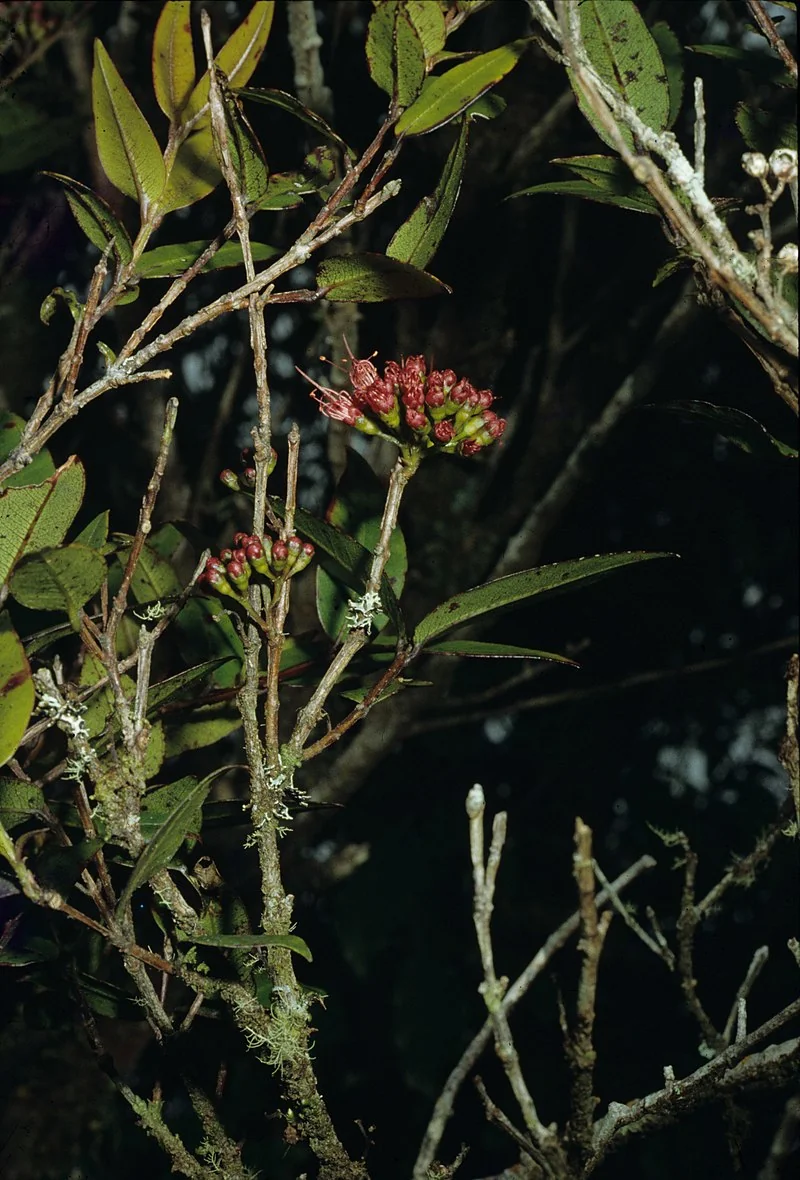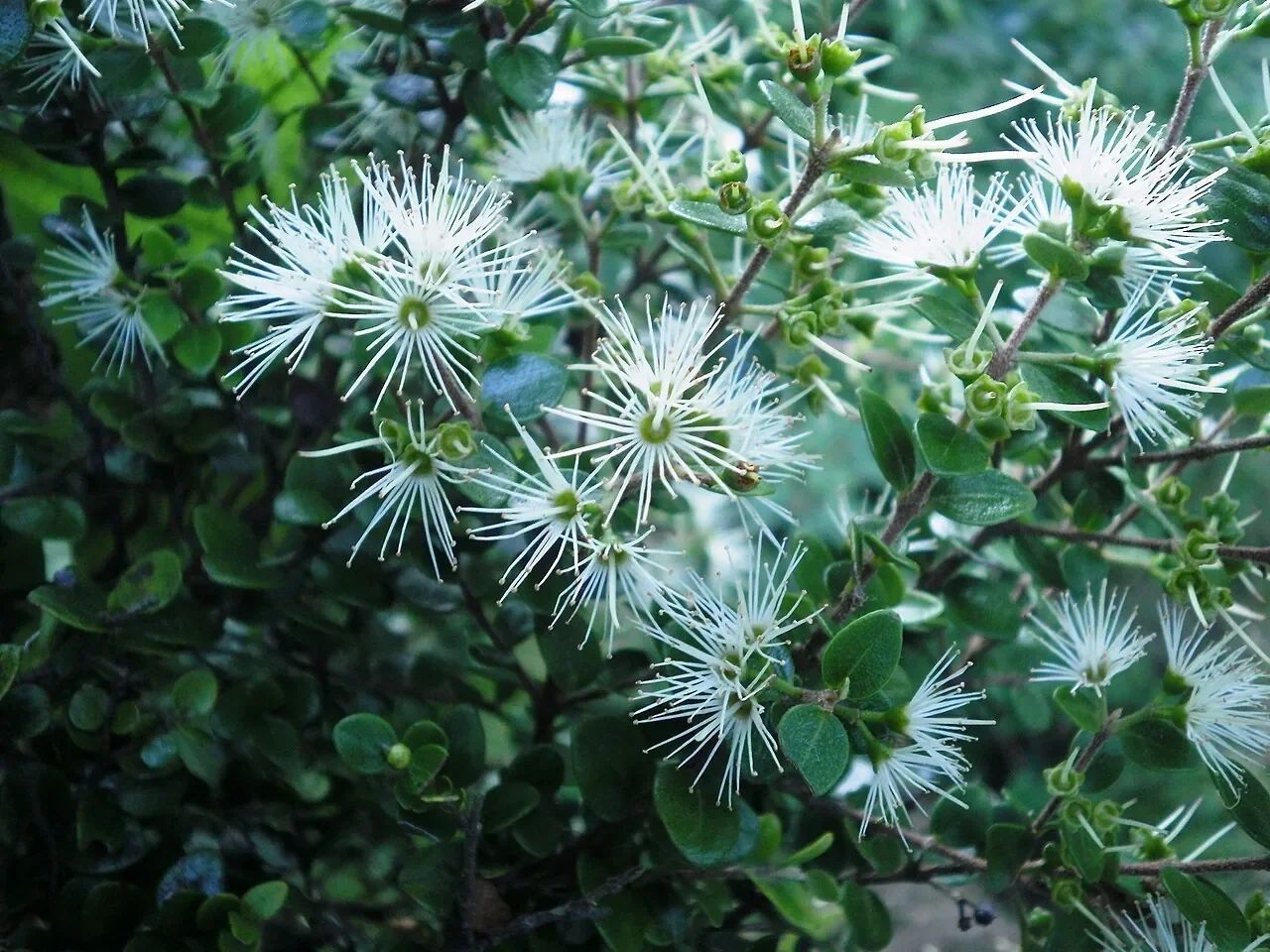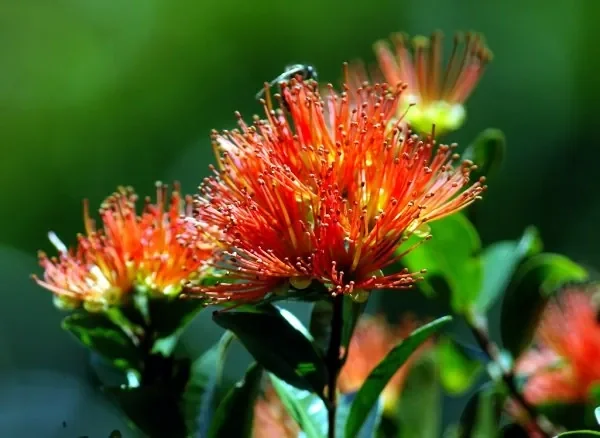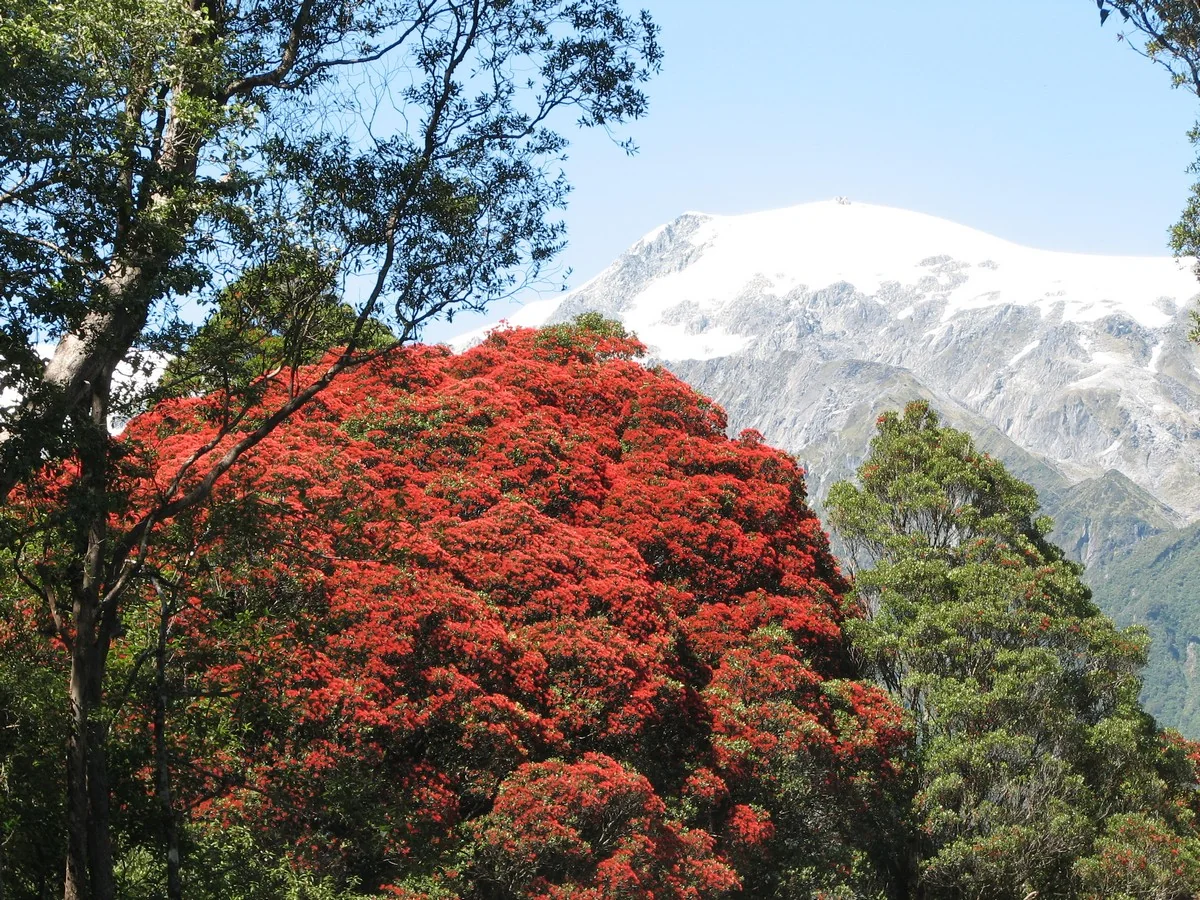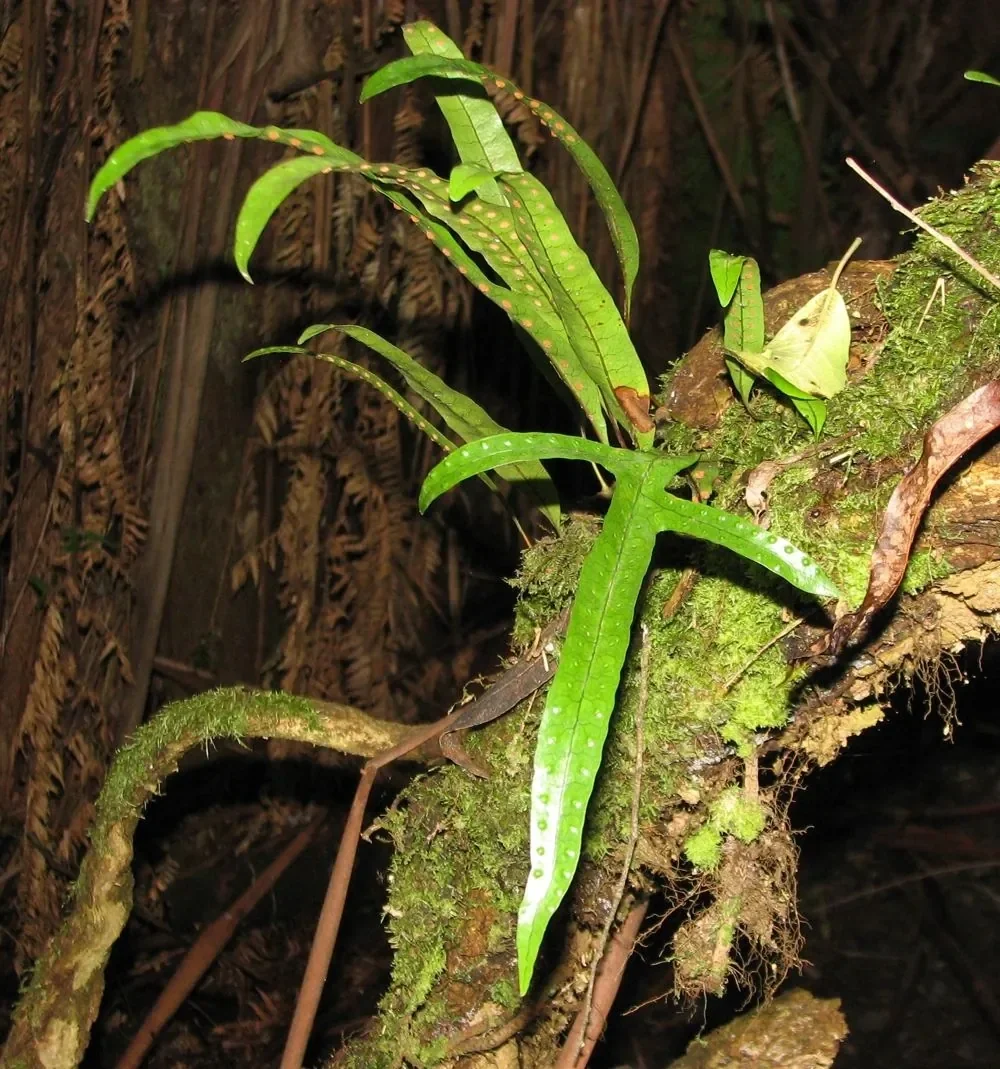
Native Pigface
Mesembryanthemum australe
Native Pigface (Mesembryanthemum australe), also known as Horokaka, is a succulent native New Zealand groundcover, celebrated for its fleshy, three-sided leaves and showy, daisy-like pink to white flowers that bloom for an extended period. This hardy perennial forms a dense, spreading mat, making it an excellent choice for coastal gardens, rockeries, or as a drought-tolerant groundcover in sunny, well-drained areas. Endemic to New Zealand, it is typically found on coastal cliffs, sand dunes, and rocky shores. Its unique succulent foliage and vibrant flowers add a touch of exotic beauty to any landscape, showcasing the diversity of New Zealand's coastal flora. For related species, see the native plants index.

Plant Description
Botanical Features
Native Pigface (Mesembryanthemum australe), also known by its Māori name horokaka, is a trailing, succulent herb that can be an annual or short-lived perennial. Its stems are round, smooth, and grow prostrate along the ground, often rooting freely at the nodes, and can reach up to 2 meters in length. The leaves are fleshy, typically 3-angled (triangular in cross-section) with a rounded lower angle. They are linear-lanceolate to oblong in shape, pointed, and taper to a joined base, measuring between 6-40 mm long and 4-9 mm wide. It produces showy, daisy-like flowers that are 20-40 mm in diameter, with petals that are uniformly white to deep pink or purple, arranged in 3-5 rows. Flowers are solitary and can be observed throughout the year, or from spring to autumn. The fruit is a fleshy, vase-shaped capsule with parallel slits, a flat end, and wings, containing numerous brown, wrinkled seeds.
Quick Facts
Succulent Summary
| Scientific Name | Mesembryanthemum australe |
|---|---|
| Common Name | Native Pigface, Horokaka |
| Family | Aizoaceae |
| Height | Creeping, up to 10 cm tall |
| Spread | Spreading, up to 1 m wide |
| Light | Full sun |
| Soil | Well-drained, sandy soils |
| Water Needs | Low (drought-tolerant) |
| Frost Tolerance | Moderate |
| Salt Tolerance | High |
| Growth Rate | Medium to fast |
| Lifespan | Perennial |
Climate Best Suited to
Regional Suitability
Native Pigface (Mesembryanthemum australe) is native to New Zealand, typically found on coastal cliffs, sand dunes, and rocky shores. It thrives in mild, temperate climates with consistent rainfall and moderate temperatures. It is highly tolerant of strong winds, salt spray, and drought, making it an excellent choice for exposed coastal environments. Its natural habitat indicates a preference for sunny, well-drained conditions. It can be successfully cultivated in similar temperate regions, provided it has good drainage and protection from extreme heat or prolonged severe frosts when young.
| City | Climate Suitability |
|---|---|
| Whangārei | Ideal |
| Auckland | Ideal |
| Hamilton | Ideal |
| Tauranga | Ideal |
| Rotorua | Ideal |
| Gisborne | Ideal |
| New Plymouth | Ideal |
| Napier | Ideal |
| Whanganui | Ideal |
| Palmerston North | Ideal |
| Wellington | Ideal |
| Nelson | Ideal |
| Christchurch | Ideal |
| Dunedin | Ideal |
| Invercargill | Ideal |
Natural Habitat
Coastal Distribution
Understand the natural habitat of Native Pigface (Mesembryanthemum australe), which is found throughout New Zealand, on coastal cliffs, sand dunes, and rocky shores. This section details its geographical distribution, preferred environmental conditions, and the types of ecosystems where it naturally occurs.
- Widespread across New Zealand, from sea level to moderate altitudes.
- Found on coastal cliffs, sand dunes, and rocky shores.
- Prefers sunny, well-drained sites.
- Thrives in full sun.
Its broad habitat range highlights its adaptability and resilience, making it a fascinating subject for ecological study.
Plant Conservation
Mesembryanthemum australe, commonly known as Native Pigface or Horokaka, is currently classified as "Not Threatened" in New Zealand. This status reflects its widespread distribution and adaptability to coastal environments throughout the country.
Growing Requirements
Soil Requirements
Native Pigface thrives in very well-drained, sandy soils. It is highly tolerant of nutrient-poor conditions and does not require rich soil. Good drainage is paramount to prevent root rot, as it is accustomed to rapidly draining coastal sands. Avoid heavy clay soils or areas prone to waterlogging.
- Prefers sandy, free-draining soils.
- Tolerates nutrient-poor conditions.
- Requires excellent drainage; susceptible to root rot in wet soils.
- pH adaptable, but generally prefers slightly acidic to neutral.
Light Requirements
Native Pigface requires full sun exposure for optimal growth and flowering. While it can tolerate very light shade, its vigour and flowering will be significantly reduced. Plant it in an open, exposed site where it receives direct sunlight for most of the day.
- Requires full sun for optimal growth and flowering.
- Tolerates light shade, but growth may be less vigorous.
- Prefers open, exposed positions.
Water Requirements
Native Pigface is highly drought-tolerant once established, requiring minimal supplemental watering. During its establishment phase (first 6-12 months), regular watering is beneficial to encourage a strong root system. After establishment, it can withstand long dry periods, making it an excellent choice for low-maintenance coastal gardens.
- Drought-tolerant once established.
- Water regularly during establishment.
- Avoid overwatering, especially in non-sandy soils.
Planting Guide
Best Time to Plant
The best time to plant Native Pigface is during autumn or spring, when temperatures are mild and rainfall is more consistent. This allows the plant to establish its root system before the extremes of summer heat or winter cold.
Choosing a Location
Select a site with full sun and very well-drained, sandy soil. Native Pigface is ideal for coastal areas, sand dunes, rockeries, or any sunny, exposed location. Ensure it has good air circulation.
Planting Steps
- Dig a hole twice the width of the root ball and the same depth.
- Gently remove the plant from its container, being careful not to disturb the roots.
- Place the plant in the hole, ensuring the top of the root ball is level with the surrounding soil.
- Backfill with sandy soil, firming gently around the base of the plant.
- Water thoroughly immediately after planting to settle the soil.
- Do not mulch heavily, as Native Pigface prefers open, sandy conditions.
Initial Care
Water regularly during the first 6-12 months to help establish a strong root system. Once established, Native Pigface is very low maintenance and requires little to no supplemental watering. Protect young plants from extreme conditions if necessary.
Ecological Role
Coastal Ecosystem Importance
The ecological importance of Native Pigface (Mesembryanthemum australe) within its native New Zealand ecosystems is significant. Its dense, spreading growth helps to stabilize sand and soil on coastal dunes and rocky shores, preventing erosion. Its flowers provide nectar for native insects, and its fruits may be a food source for small birds and lizards, contributing to the local food web and biodiversity of coastal habitats.
- Helps stabilize sand and soil on coastal dunes and rocky shores.
- Flowers provide nectar for native insects.
- Fruits may be a food source for native birds and lizards.
- Contributes to biodiversity in coastal ecosystems.
As an endemic species, it is an integral part of the unique biodiversity that has evolved in New Zealand, supporting the delicate balance of its natural habitats.
Uses and Significance
Garden Uses
- Excellent groundcover for coastal gardens, sand dunes, and rockeries.
- Suitable for exposed sites due to high salt and drought tolerance.
- Adds unique texture and vibrant colour to landscapes.
- Low maintenance once established.
Landscaping Applications
Garden Design Uses
Native Pigface (Mesembryanthemum australe) is a highly versatile and attractive plant for various landscaping applications, particularly in native and low-maintenance gardens. Its succulent foliage and vibrant flowers make it a valuable asset.
- Ideal for coastal gardens, rockeries, and groundcover.
- Excellent for planting on sand dunes or rocky shores for erosion control.
- Provides year-round interest with evergreen, fleshy leaves and colourful flowers.
- Suitable for mass plantings or as an accent plant.
Its ability to thrive in challenging conditions and its aesthetic appeal make it a popular choice for creating resilient and beautiful native landscapes.
Seasonal Care Calendar
Spring
New growth emerges, and flowering begins. This is an ideal time for planting new Native Pigface specimens or propagating from cuttings. Ensure consistent moisture for young plants and protect them from strong winds if necessary. A light feed with a balanced slow-release fertilizer can encourage vigorous growth.
- Ideal time for planting and propagation.
- Ensure consistent moisture for new plants.
- Light fertilization if needed.
Summer
Native Pigface is actively growing and flowering profusely during summer. Consistent watering is crucial, especially during dry spells, to prevent stress. Monitor for pests and diseases, though it is generally quite resilient.
- Active growth and abundant flowering.
- Consistent watering is essential.
- Monitor for pests and diseases.
Autumn
Growth slows as temperatures cool. This is another good time for planting, allowing roots to establish before winter. Minimal care is required for established plants, but ensure they remain adequately hydrated.
- Good time for planting.
- Minimal care for established plants.
- Ensure adequate hydration.
Winter
Native Pigface is evergreen and provides year-round interest. It is moderately frost-tolerant and requires minimal care during this period. Ensure good drainage to prevent root issues in wet conditions.
- Evergreen, provides year-round interest.
- Protect young plants from severe frost.
- Ensure good drainage.
When to Prune and How Much
Minimal Maintenance
Native Pigface generally requires minimal pruning. The primary reason for pruning is to remove spent flowers to encourage further blooming, or to tidy up the plant's appearance. Light trimming can encourage denser growth.
- Remove spent flowers (deadhead) to prolong blooming.
- Light trimming to maintain shape and encourage density.
- Best done after the main flush of flowers or in late winter/early spring.
- Use clean, sharp tools.
Avoid heavy pruning, as this can stress the plant. Its natural spreading habit is part of its charm, so allow it to grow naturally.
How to Grow Native Pigface
Native Pigface, also known as Horokaka, is a succulent native New Zealand groundcover, celebrated for its fleshy, three-sided leaves and showy, daisy-like pink to white flowers. This hardy perennial forms a dense, spreading mat, making it an excellent choice for coastal gardens, rockeries, or as a drought-tolerant groundcover in sunny, well-drained areas. Endemic to New Zealand, it is typically found on coastal cliffs, sand dunes, and rocky shores. Its unique succulent foliage and vibrant flowers add a touch of exotic beauty to any landscape, showcasing the diversity of New Zealand's coastal flora. Understanding its propagation methods is key to successfully growing this delightful species.
From Seed
Propagating Native Pigface from fresh seed is a viable method, though germination can be slow and variable. Collect ripe seeds in late summer or early autumn. Clean the seeds thoroughly to remove any fleshy pulp. Sow the seeds in a tray filled with a well-draining seed-raising mix, lightly covering them. Maintain consistent moisture in the seed tray and keep it in a warm, sheltered location. Germination can take several weeks to months. Once seedlings have developed a few true leaves, they can be potted into individual containers and grown in a sheltered environment before planting out.
From Cuttings
Softwood or semi-hardwood cuttings are the most reliable and efficient method for propagating Native Pigface, ensuring that new plants retain the exact characteristics of the parent. Take 5-10 cm cuttings from healthy, non-flowering stems in spring or summer. Remove the lower leaves and dip the cut end in a rooting hormone. Insert the cuttings into a well-draining propagation mix. Keep the cuttings in a warm, humid environment, out of direct sunlight, perhaps under a plastic dome or in a propagator. Rooting typically occurs within 4-6 weeks. Once rooted, the new plants can be potted on and grown in a sheltered environment until they are ready for planting.
Pests and Diseases
Common Issues
Native Pigface is a remarkably hardy plant and generally resistant to most pests and diseases. Its adaptation to diverse environments means it has few significant natural enemies.
Common Pests
- Generally pest-free.
- Occasionally, aphids or mealybugs may appear on new growth, but rarely cause significant damage.
Common Diseases
- Highly resistant to diseases.
- Root rot can occur in poorly drained, waterlogged soils.
- Leaf spot diseases are rare but can occur in very humid conditions.
Good garden hygiene, proper watering, and excellent drainage are key to preventing most pest and disease issues. Healthy, well-sited plants are rarely affected by significant problems.
Cultural Significance
Mesembryanthemum australe, commonly known as horokaka or New Zealand ice plant, holds cultural significance primarily for the Māori people of New Zealand. This plant is botanically recognized as Disphyma australe, with Mesembryanthemum australe being a synonym.
Cultural Significance of Horokaka:
- Medicinal Uses: The Māori traditionally utilized the juice extracted from the leaves of horokaka to treat various ailments, including boils, abscesses, and itch. Some modern research suggests that Disphyma australe may possess antibacterial properties.
- Food Source: The ripe fruit of the horokaka plant was consumed by Māori. The leaves were also part of their diet, and early European settlers in New Zealand were known to eat the ripe fruits and pickle the leaves.
- Ecological Role: Horokaka plays a vital role in stabilizing sand dunes, a function reflected in its Māori name. The term "horo" can mean "landslide," and "kaka" can mean "hair," suggesting its role in binding the land.
Bonus Tip
The name Mesembryanthemum comes from the Greek for "midday flower", as the flowers of many species in this genus only open in bright sunshine. The common name "ice plant" comes from the glistening bladder-like cells on the leaves, which look like tiny ice crystals.
